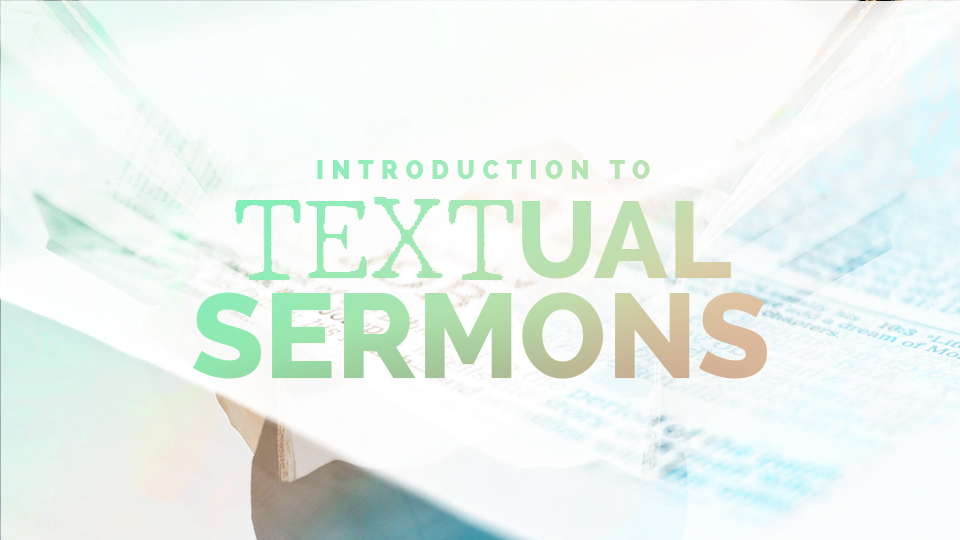Textual sermons offer a refreshing counterpoint to the prevalent superficiality that is found in the present age of soundbites. Textual preaching is a method of sermon preparation that centres on a specific biblical passage as its primary focus. It is often confused with expository preaching or considered a subset of expository preaching in certain circles. While expository preaching delves deeply into a larger section of Scripture, textual preaching offers a more concentrated approach, drawing out the main themes and applications from a particular text.
Textual sermons allow preachers to explore the richness and depth of a specific portion of God’s Word, enabling them to communicate its message with clarity and impact. While it allows for creative interpretation and application, textual preaching also demands a careful and nuanced understanding of the original context and meaning of the text.
This article will examine the key characteristics of textual preaching, explore the art and craft involved, and discuss its strengths and challenges in contemporary ministry.
Characteristics of Textual Preaching
Textual preaching is distinguished by several key characteristics that set it apart from other preaching styles, as outlined in The Art and Craft of Biblical Preaching (preachingtoday.com). Here are some of the core elements:
- Focus on a Specific Text: Unlike topical preaching, which begins with a theme or idea, textual preaching starts with a particular passage of Scripture. The sermon is built around the nuances, implications, and applications of this specific text. This focus ensures that the message remains firmly rooted in the Bible’s authority.
- Extraction of Main Ideas: The preacher carefully analyzes the text to identify the central message or theme. These main ideas become the foundation for the sermon’s structure and content. This process of exegesis allows the preacher to faithfully extract the intended meaning of the passage.
- Development and Application: While the core message is derived from the text, the preacher has the freedom to develop and apply these ideas using illustrations, examples, and further biblical references. This allows for a balance between exegesis and proclamation. Preachers can leverage other scriptures to illuminate the main text while ensuring the focus remains on the chosen passage.
- Flexible Structure: Unlike expository preaching, which often follows the structure of the biblical text, textual preaching offers more flexibility in sermon organization. The preacher can arrange the main points and supporting material in a way that best communicates the message to the audience. This flexibility allows for creativity in crafting a compelling and engaging sermon.
The Art and Challenges of Textual Preaching
At its core, textual preaching involves a deep engagement with a specific biblical passage. The preacher must carefully analyze the text to identify the central message or theme, a process known as exegesis. From this foundation, the sermon’s structure and content are developed. While the primary focus remains on the chosen text, the preacher has the freedom to expand on the main ideas through illustrations, examples, and further biblical references. This balance between exegesis and application is crucial for effective textual preaching.
One of the strengths of textual preaching is its potential for in-depth biblical exposition. By concentrating on a specific passage, the preacher can delve into the nuances of the text, uncovering rich layers of meaning. This focused approach can lead to a deeper understanding of God’s Word for both the preacher and the congregation.
However, textual preaching also presents challenges. There is a risk of becoming overly focused on the text, neglecting the broader context of Scripture. Additionally, crafting a compelling sermon from a single passage requires careful planning and skilful development. Preachers must ensure that the message is clear, relevant, and engaging for the contemporary audience.
To excel at textual preaching, preachers must possess a keen ability to:
- Select appropriate texts: Choosing passages that are rich in meaning and relevant to the congregation is essential.
- Conduct thorough exegesis: A deep understanding of the text’s historical, cultural, and literary context is crucial for accurate interpretation.
- Develop engaging outlines: Creating a clear and logical structure that effectively communicates the main points is vital.
- Utilize effective illustrations: Using relevant and relatable stories or examples can help bring the message to life.
- Apply the text meaningfully: Connecting the biblical message to the lives of the congregation is essential for making the sermon relevant.
Ultimately, the success of textual preaching lies in the preacher’s ability to bridge the gap between the ancient text and the modern audience. By carefully exegeting the passage, identifying its central themes, and creatively applying its message, preachers can bring the transformative power of God’s Word to life in a way that is both intellectually stimulating and emotionally resonant. With diligence, skill, and a deep reverence for Scripture, textual preachers can captivate their congregations and inspire them to a deeper understanding and application of the biblical text.’
Conclusion
Textual preaching offers a unique opportunity to delve deep into the richness of Scripture, providing both preacher and congregation with a profound encounter with God’s Word. By focusing on a specific passage, this method allows for a concentrated exploration of its meaning and application. While it presents certain challenges, the rewards of effective textual preaching are immeasurable.
Through careful text selection, in-depth exegesis, and creative sermon development, preachers can unlock the transformative power of Scripture for their congregations. By skillfully balancing the analytical and the practical, textual preaching can inspire, challenge, and equip believers to live out their faith with conviction.
In a world characterized by information overload and fleeting trends, textual preaching offers a refreshing counterpoint. It invites us to slow down, ponder the timeless truths of Scripture, and experience the life-changing power of God’s Word
